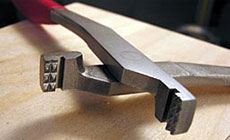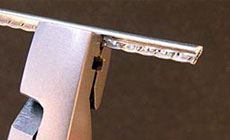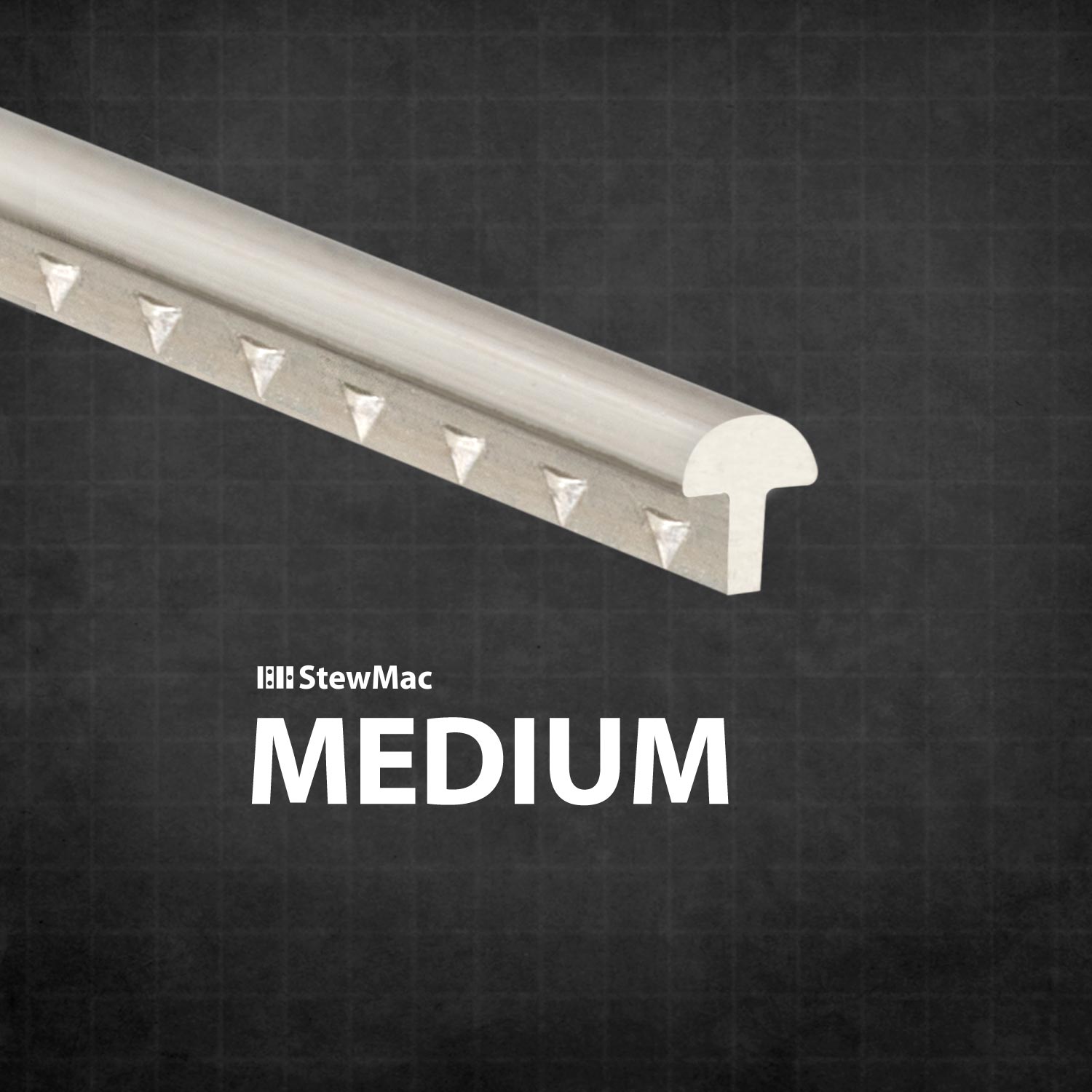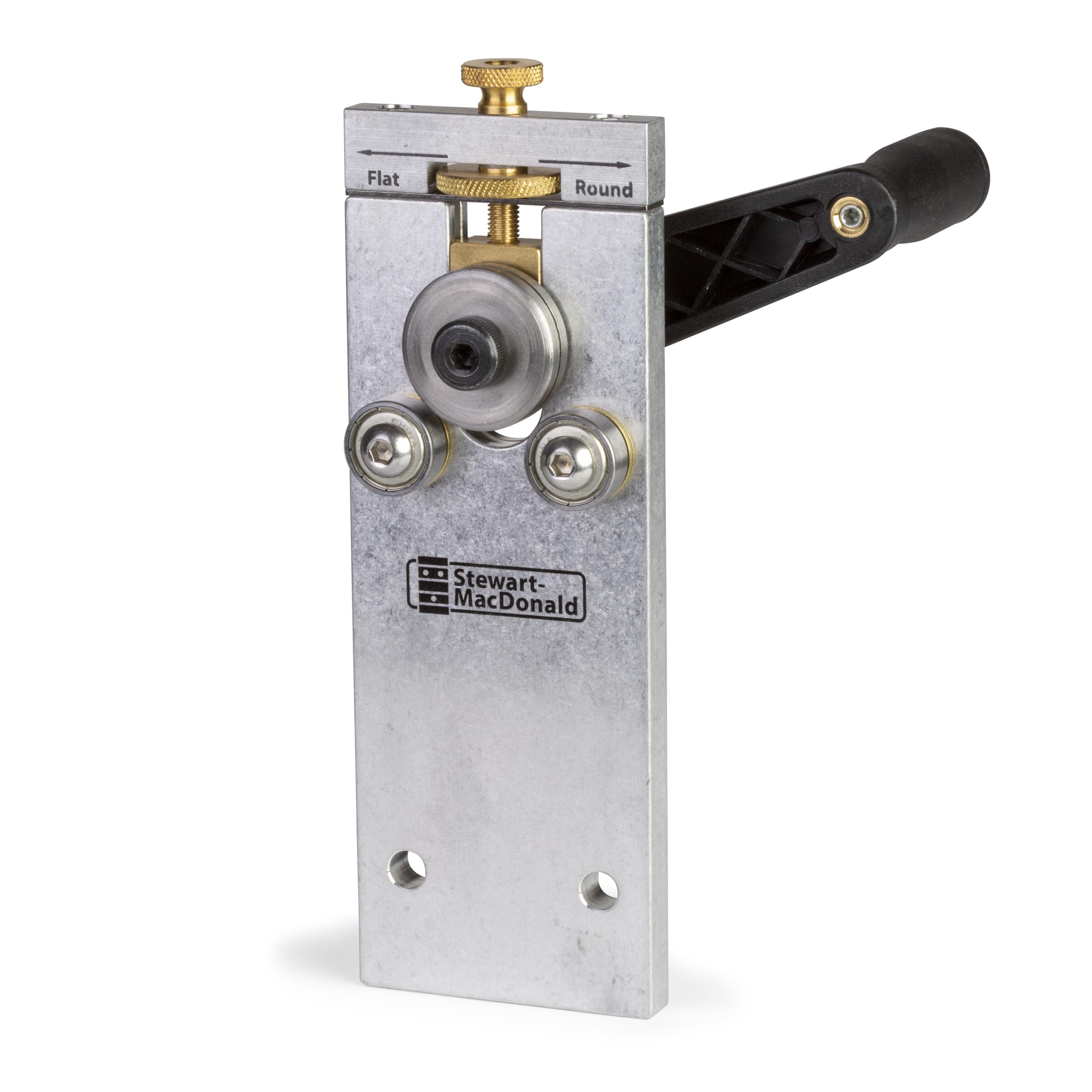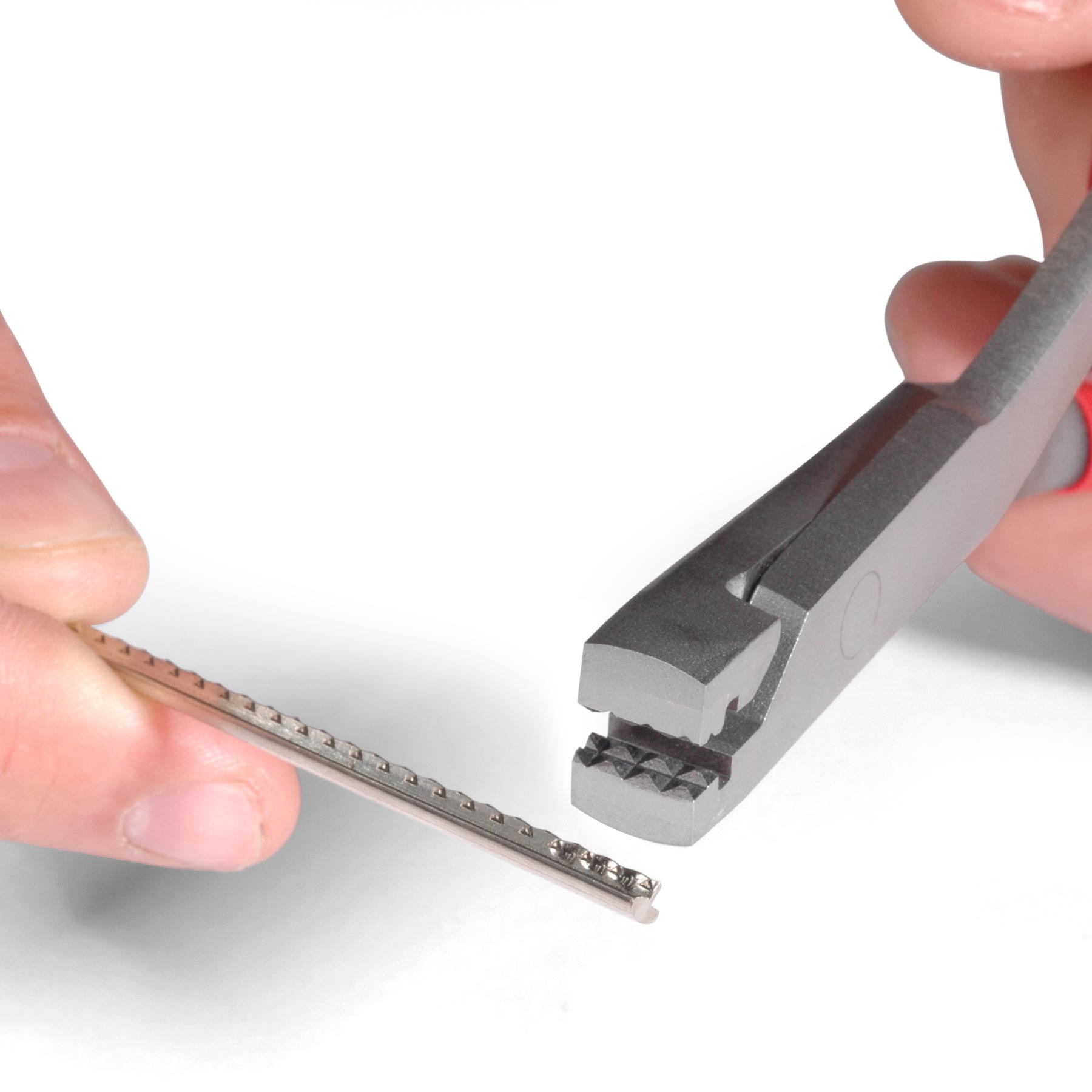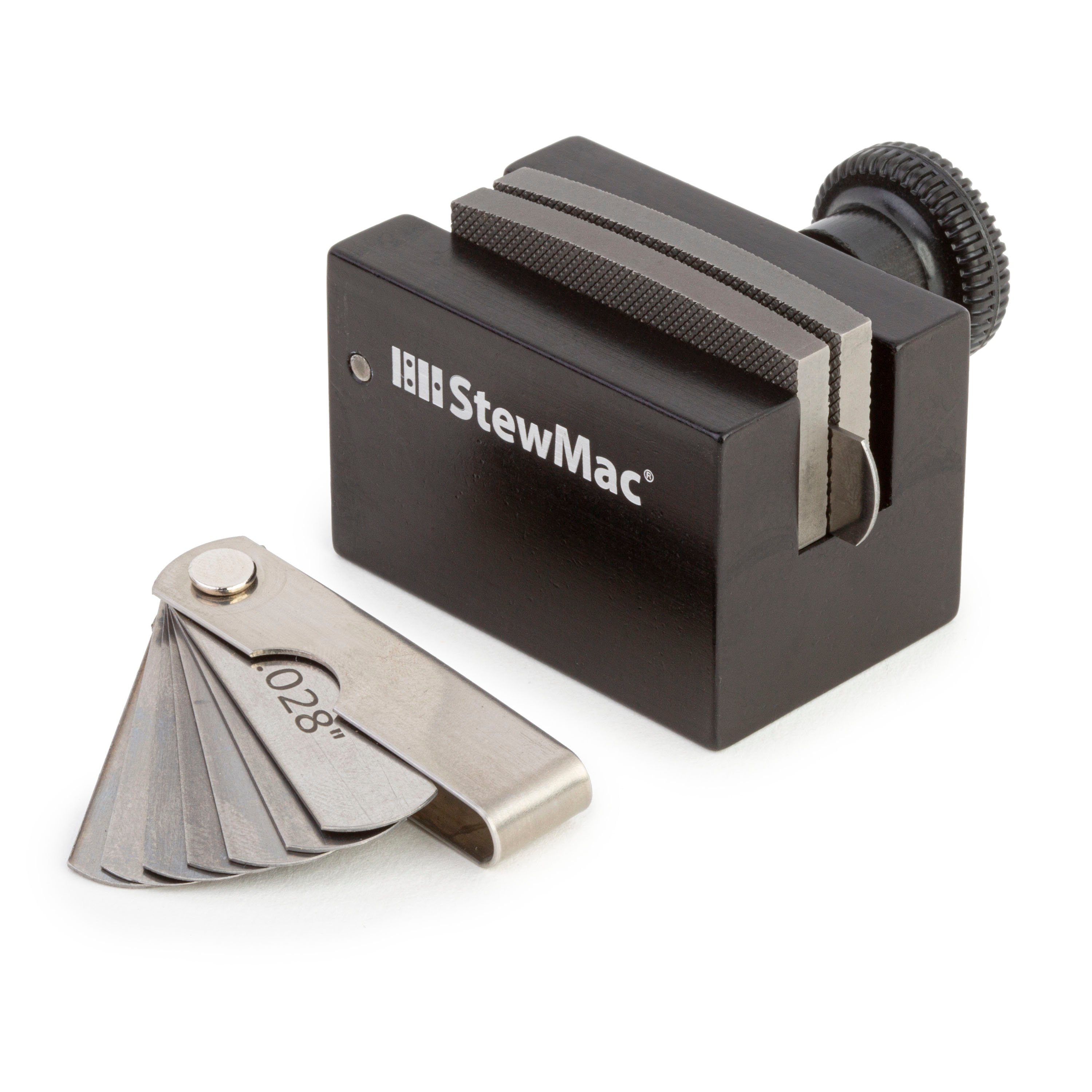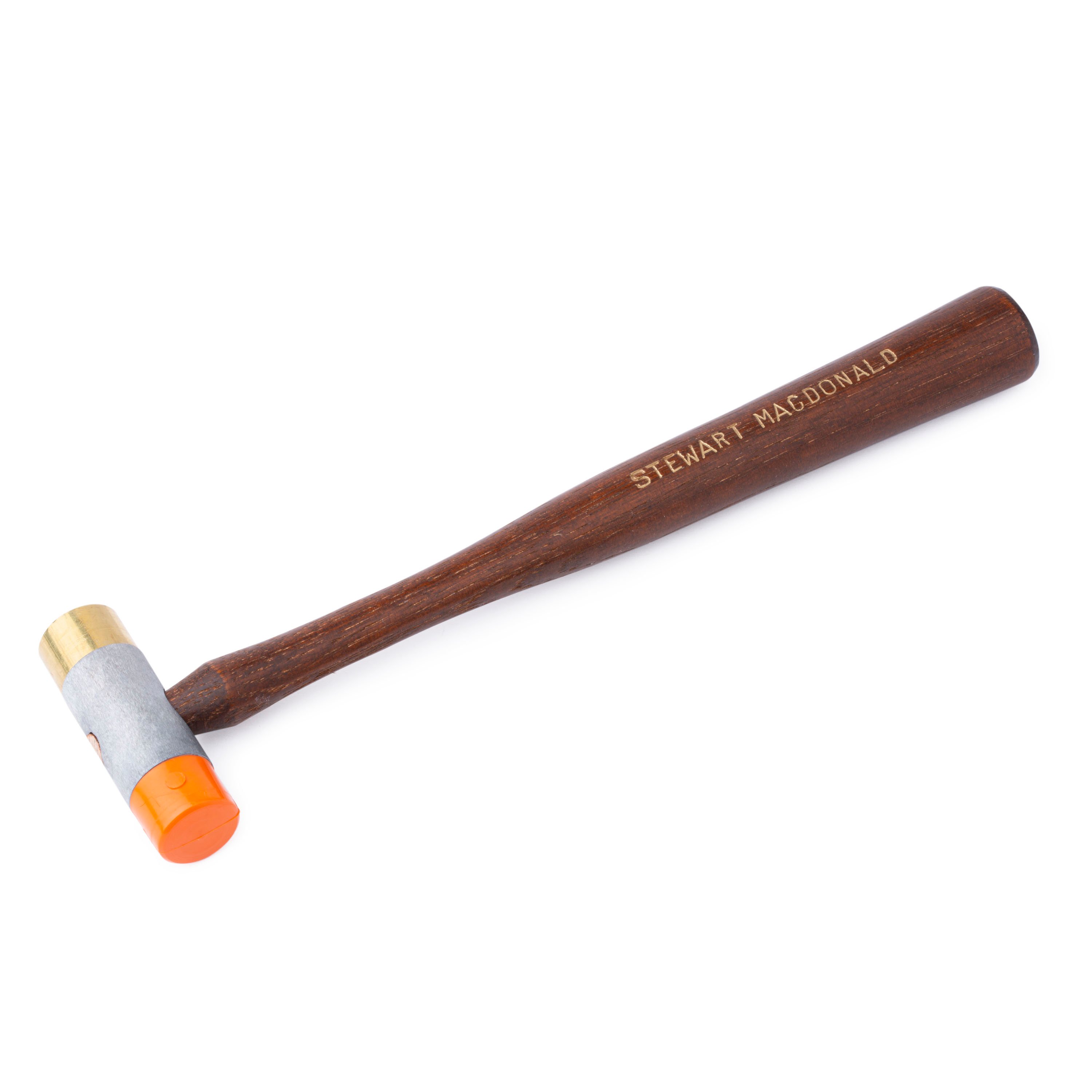When frets don't fit the slot, resize the fret tang
Bulk up your skinny fretwire! Let me show you how! I'm sick of frets popping up! I'm going to read this free trade secret from Dan! Let me show you how to resize your fretwire. (I’m using a single fret as an example, but these techniques would be applied to all the frets on the guitar.) Why not just widen the slots? I don’t want remove wood from the neck. That can only weaken it, and it leaves that much less wood for the next fret job. Once the fretboard is leveled and the slots are clean, I test the fit of my fretwire by cutting a small piece and putting a bend in it like a handle. Here I'm using our #0149 fretwire which has a tang thickness of about .020"-.023". The barb-to-barb measurement is approximately .035". Before bending the wire into a handle, I nip away a section of tang at the bend with Fret Tang Nippers so I can bend it without distorting the tang I'll be using. A file removes any burrs left on the tang. I hammer or press this into a slot. This gives me a feel for how the fret will seat without having to install an entire fret and then pull it back out. You don’t want remove wood from the neck. You’d only weaken it, and leave less wood for the next refret. And if your fret slots are too loose, don't depend on glue to hold the frets in. They should stay put on their own. I use glue to fill gaps under the frets, for better tone. If the slot is just a little too tight I'll remove some metal from the barbs, “taking a little off the sides” with the Fret Barber. Here I'm using the .032" feeler gauge that came with the Fret Barber to hold its two files apart. The barbs’ outside dimension is wider than the .032" gauge, so I tighten the set-screw only enough for the files to barely contact the fret. This gives a very slight cutting pressure as the fretwire is pulled through, and I tighten the screw as I pull. After the first pass, I tighten the set-screw a little so it’s tight but the fretwire pulls through pretty easily. Tightening the Fret Barber files, I wear gloves to hold the wire down and grab the end of it with pliers to pull it through. After this sizing session, I take a close look at the diminished tang, measure it with a caliper and test the fit. Finish up by rolling whatever radius you need into the fretwire, as I’m doing here with the FretBender. Once radiused, the fretwire can still be pulled through the Fret Barber again; in fact, I prefer to pull radiused wire through because it follows the curved top of the files so well. The most basic tool for installing frets is the fret hammer, and there’s a definite technique to using it. It’s not like hammering a nail! The hammer needs a non-marring head, and it must be heavy enough to seat the fret firmly. Tap-tap-tapping with a light hammer won’t do, and a carpenter’s hammer is too hard — that’s a sure way to damage frets. Learn more in our free info pages online. Often the fret tang needs to gain weight, not lose it. If the tang is too loose in the slot, it won’t stay down without glue; bulking up the tang size cures that. The pressure from the wider tangs puts a back-bow in the neck, helping to straighten it. This is “compression fretting” and it’s useful for guitars with non-adjustable necks, like many Martins. The Fret Crimper gives you great control over the fret tang's size. The jaws have interlocking teeth that crimp a zig-zag into a fret tang, making it wider. Crimp hard repeatedly along the fretwire. After crimping one side turn the wire end-for-end and crimp the opposite way, making the tang equal on both sides. When the crimping is finished, the tang has a zig-zag shape. This gives me a fret that I know will stay put!When your frets don’t fit, here’s what to do: resize the fret tang

When the frets you're installing are too tight or too loose, you can tweak the fit by altering the tang under the fretwire: bulk it up or slim it down.
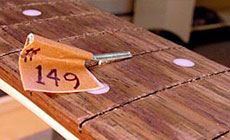
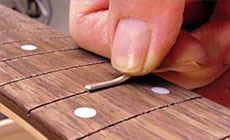
I figured you’d ask that!
Make 'em thinner
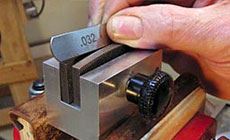
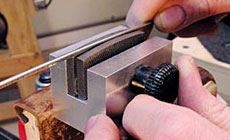
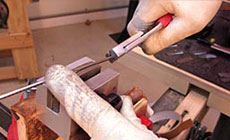
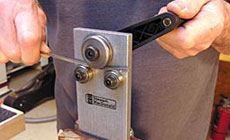
Learn how to hammer frets
Make 'em wider
